Harbans Singh and Quek Li Ying
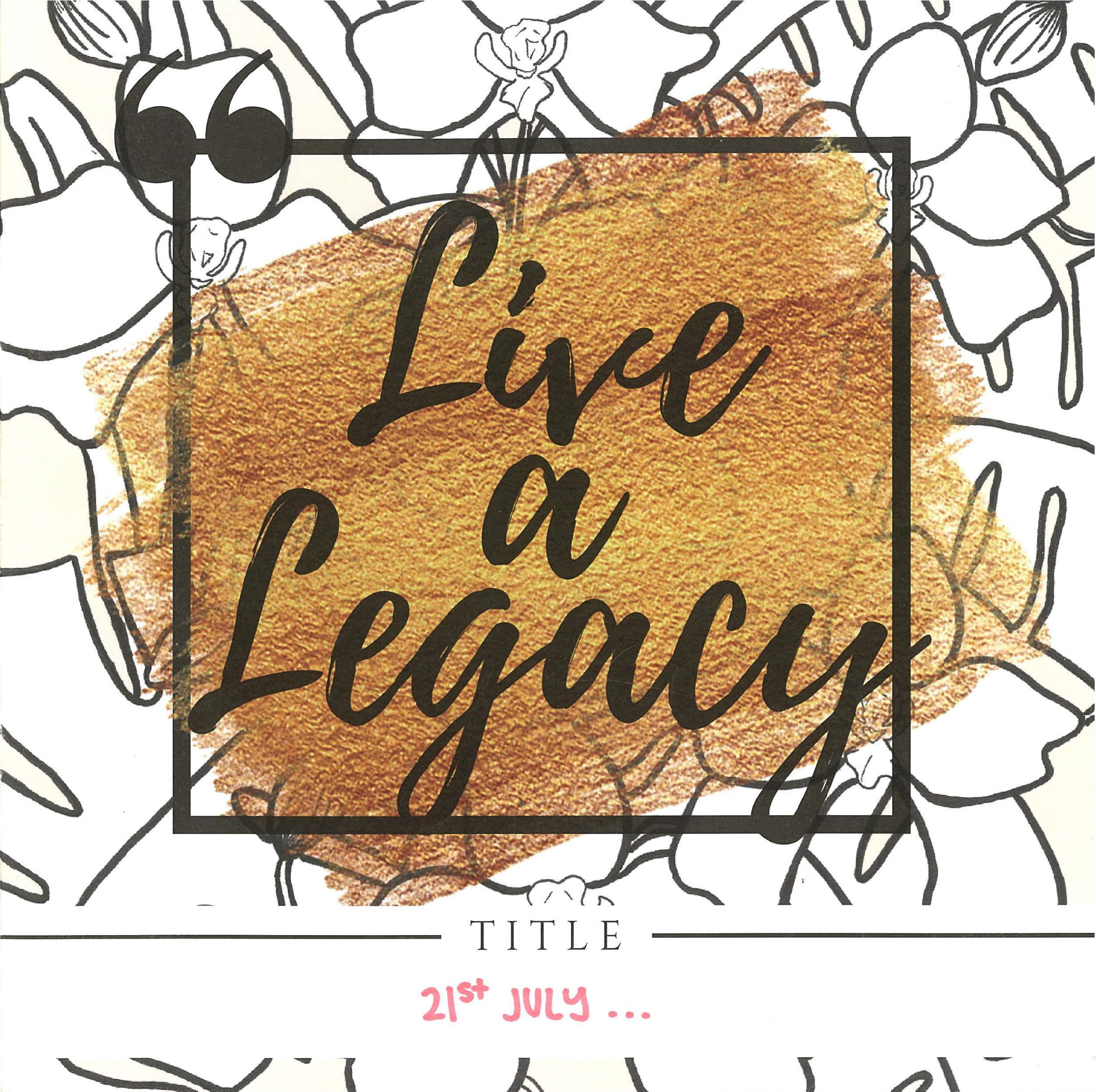
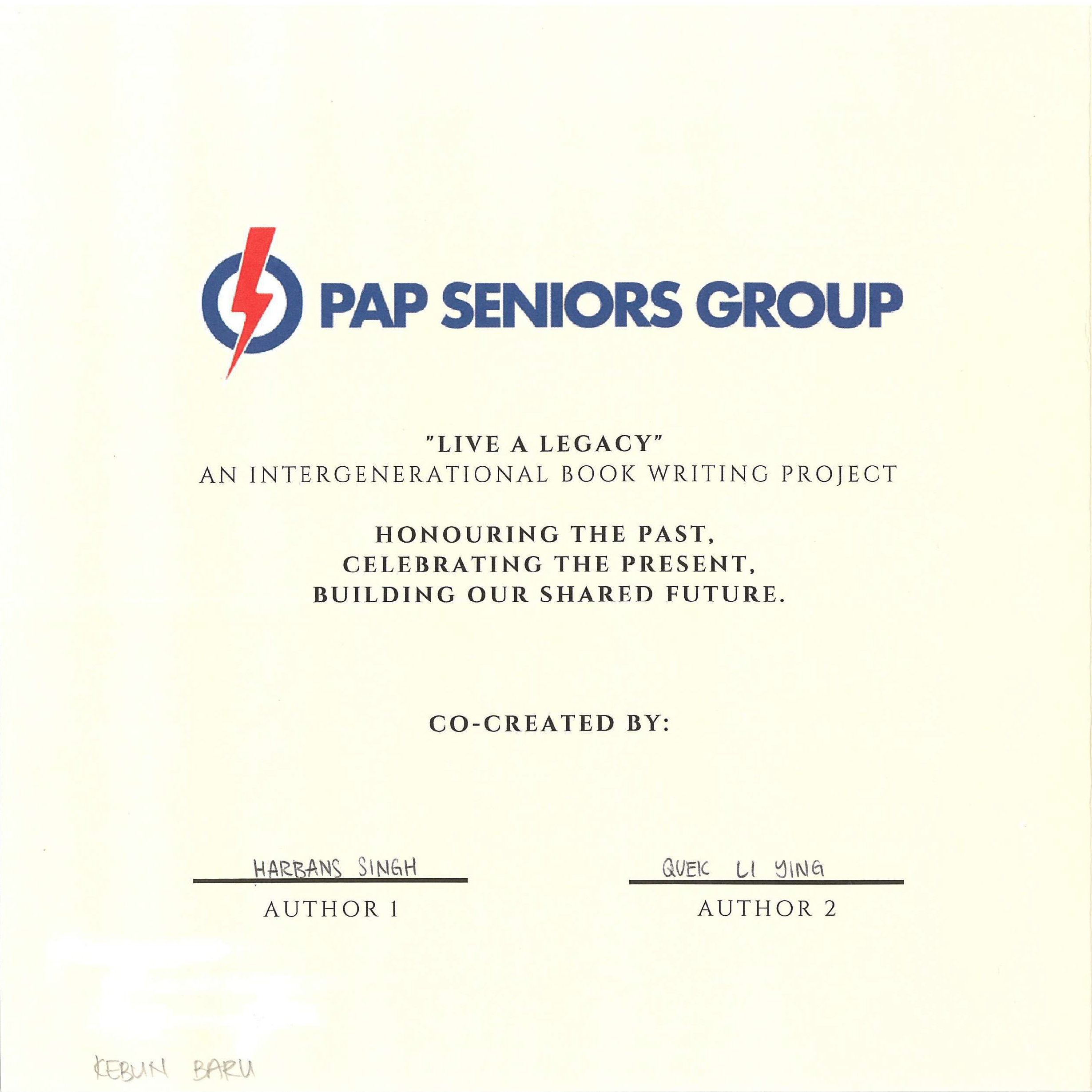
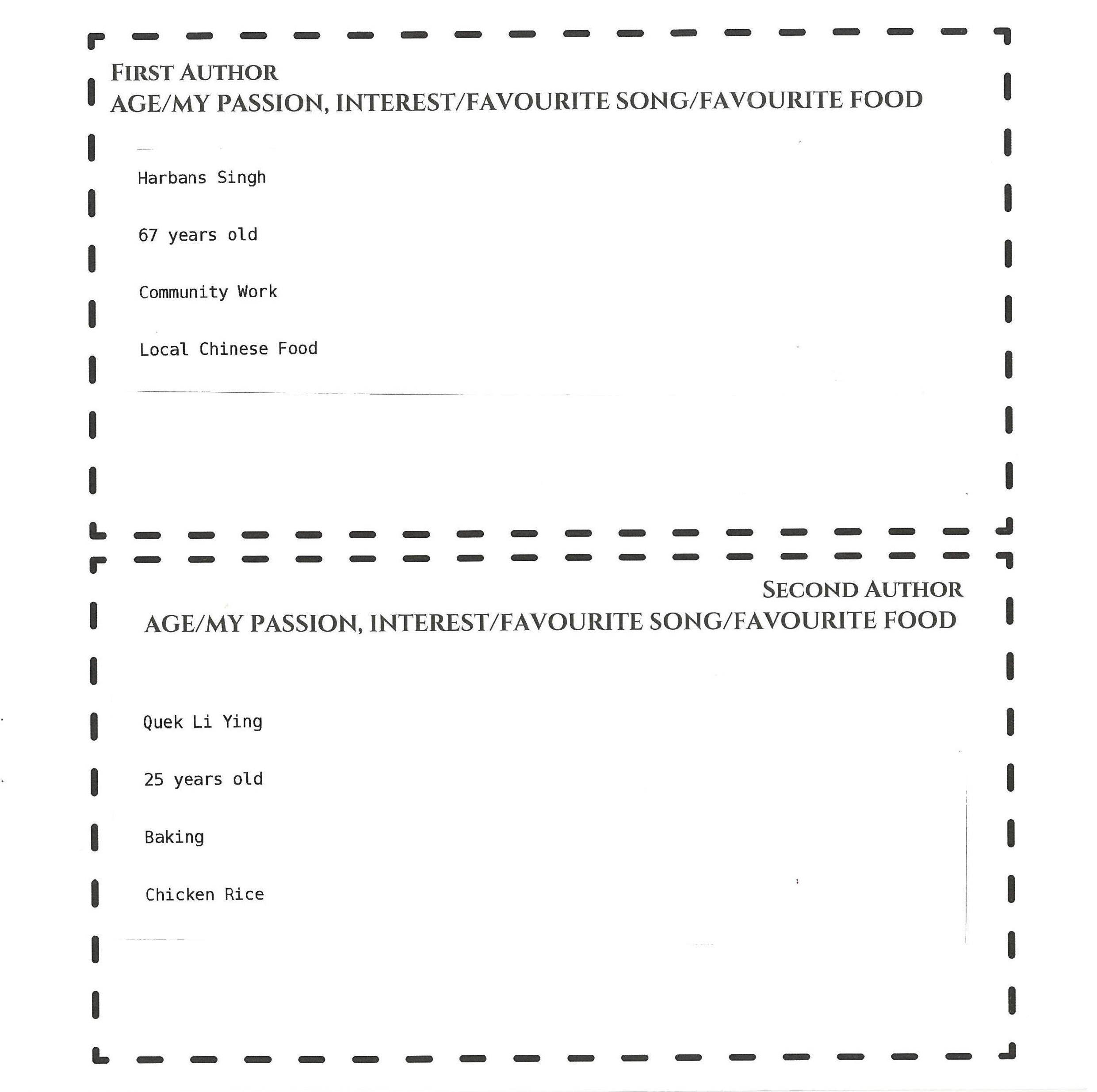
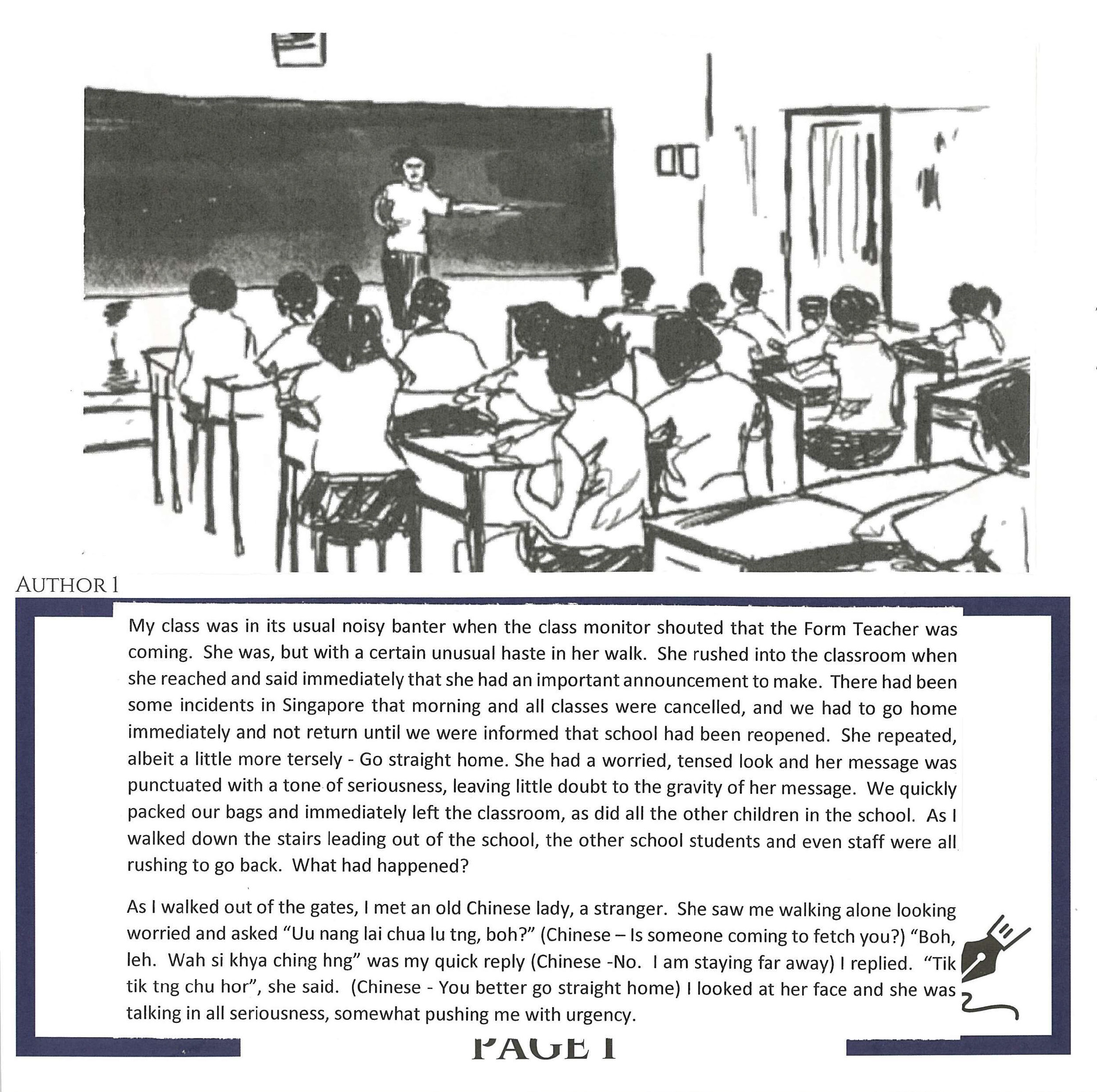
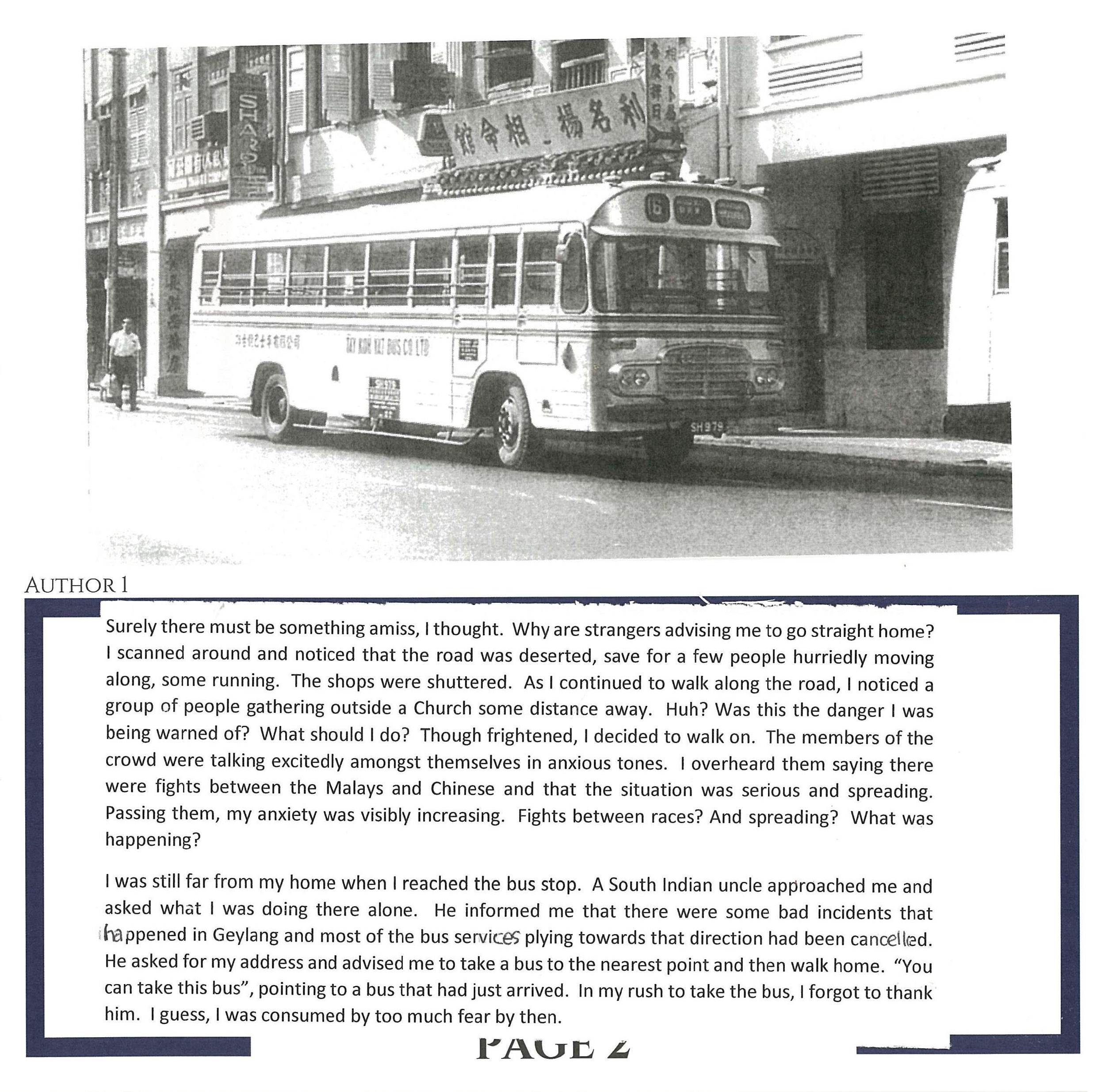
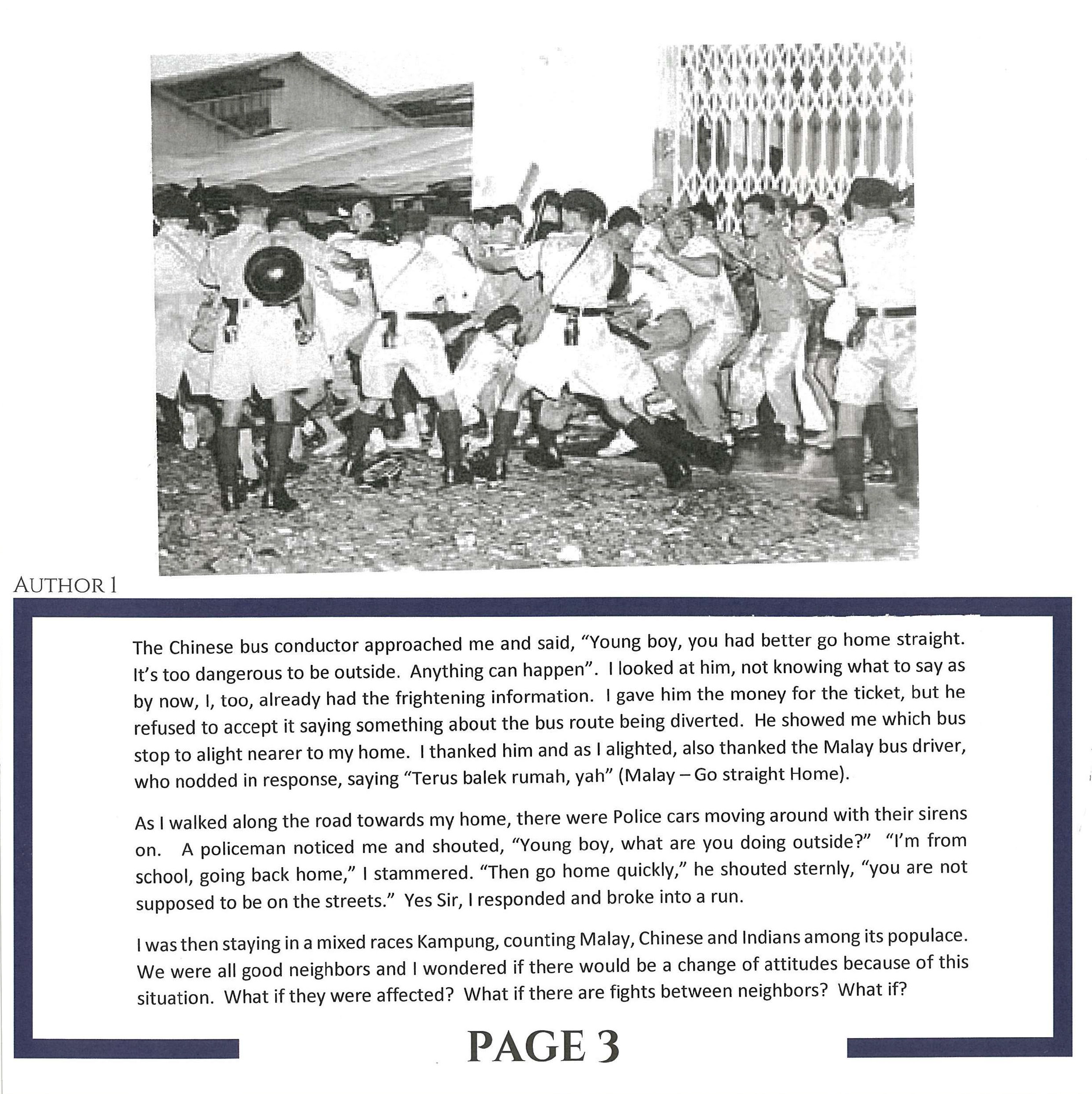
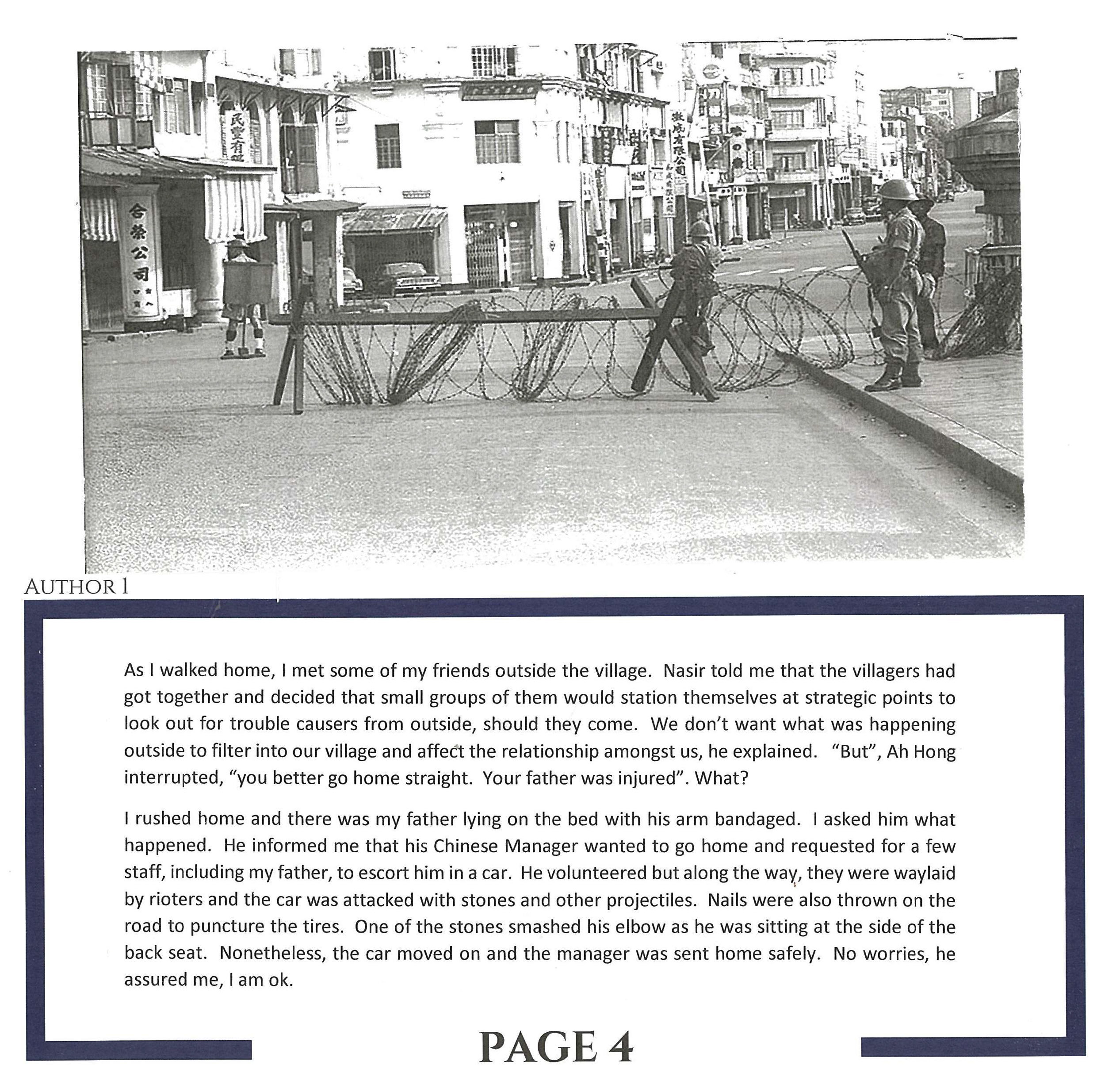
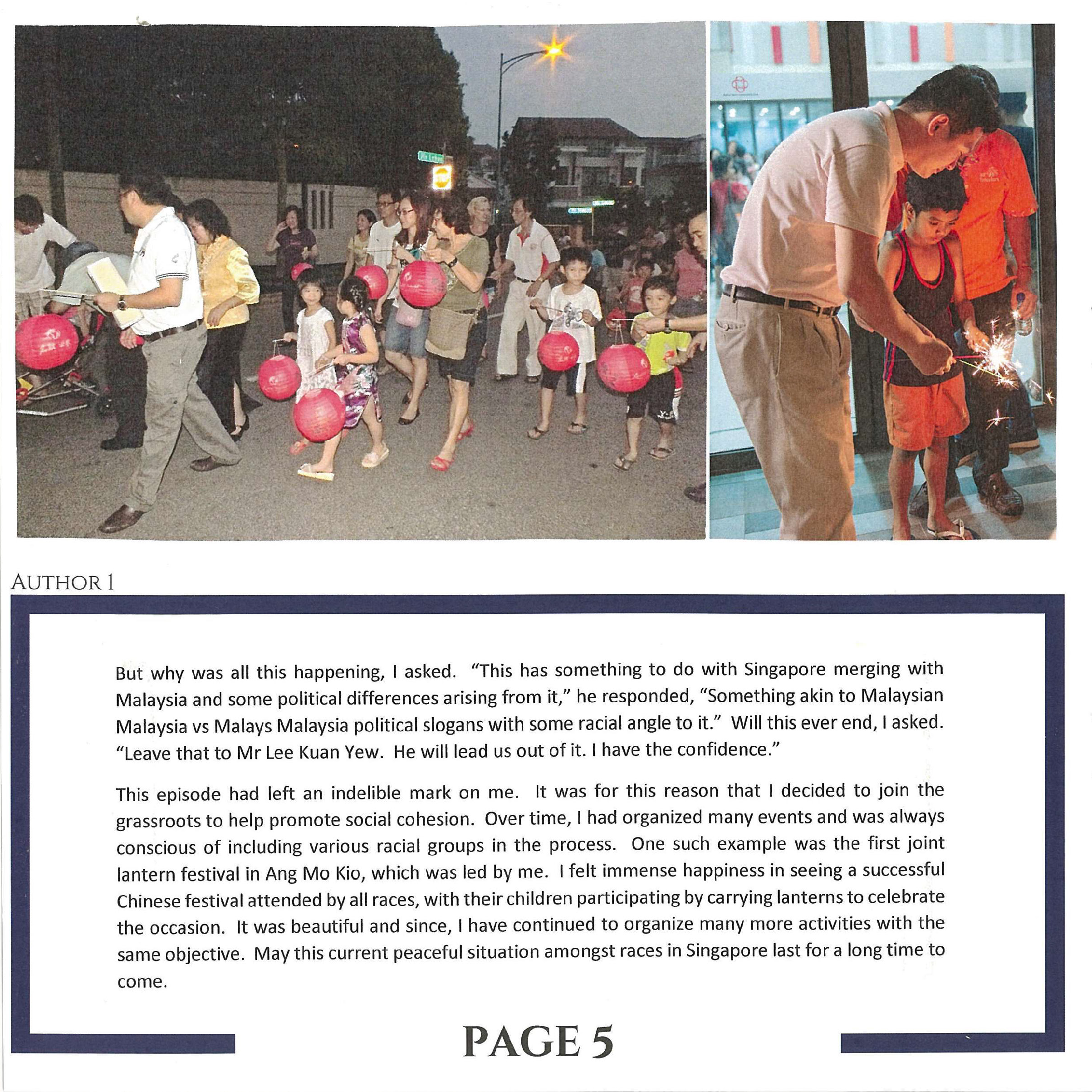
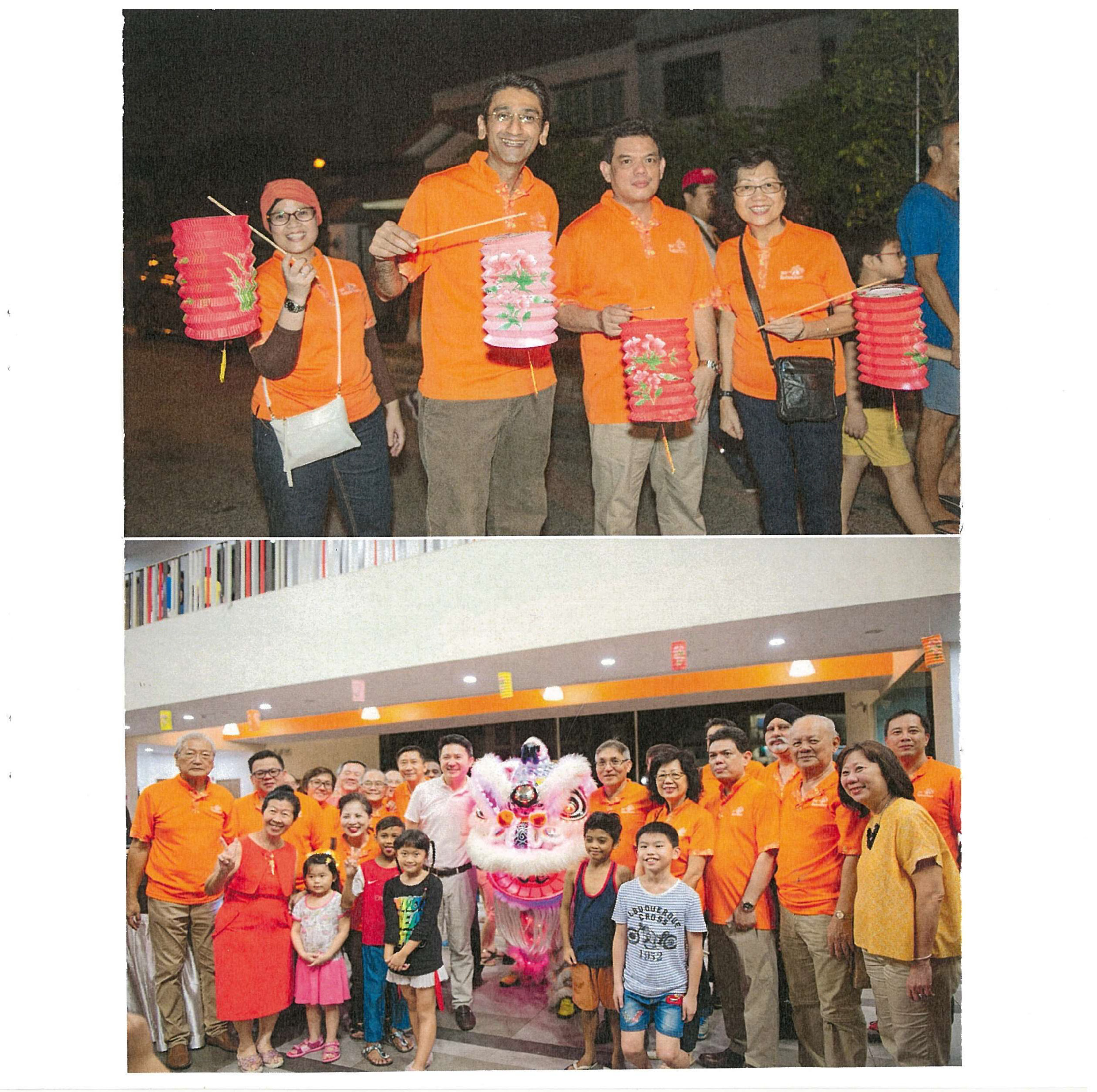
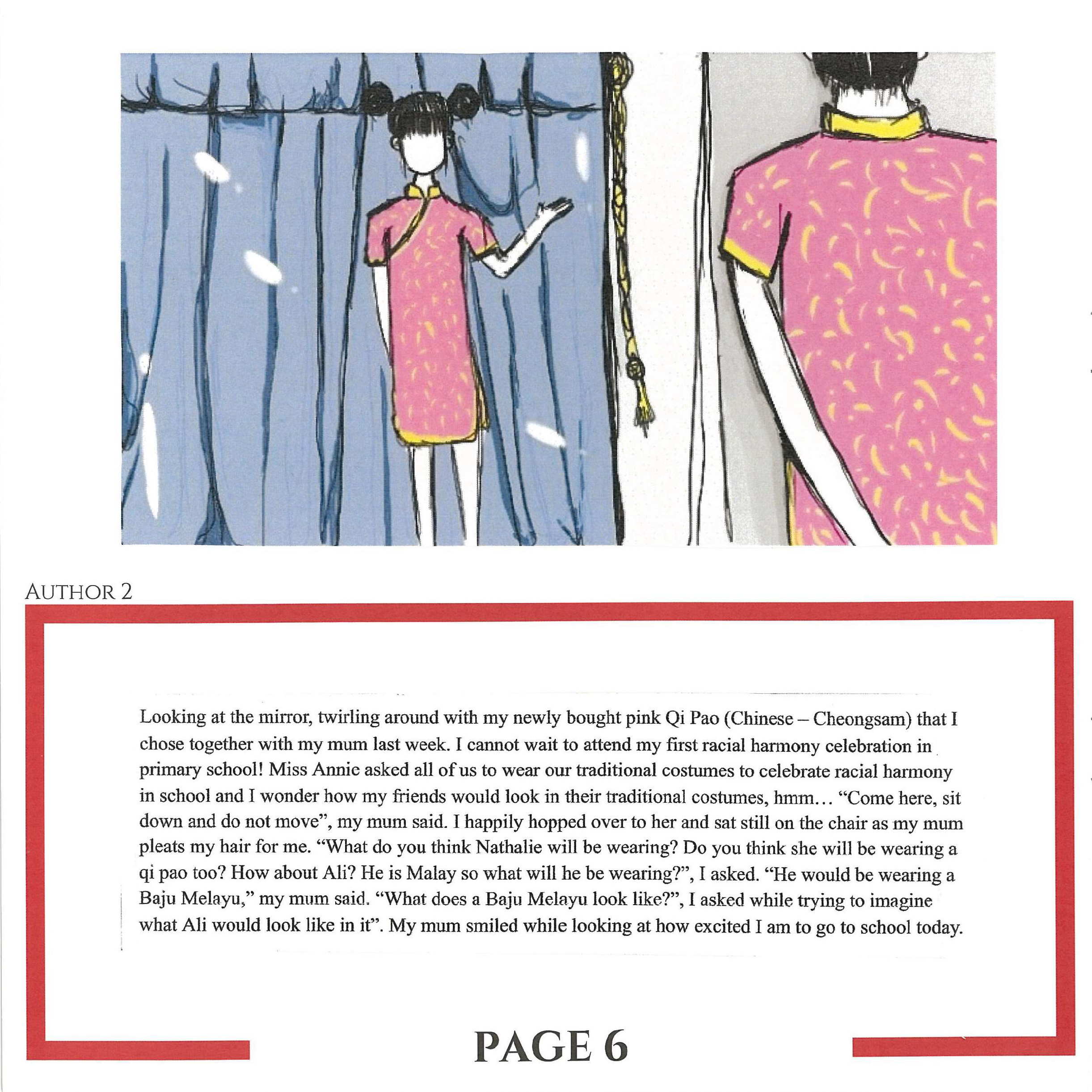
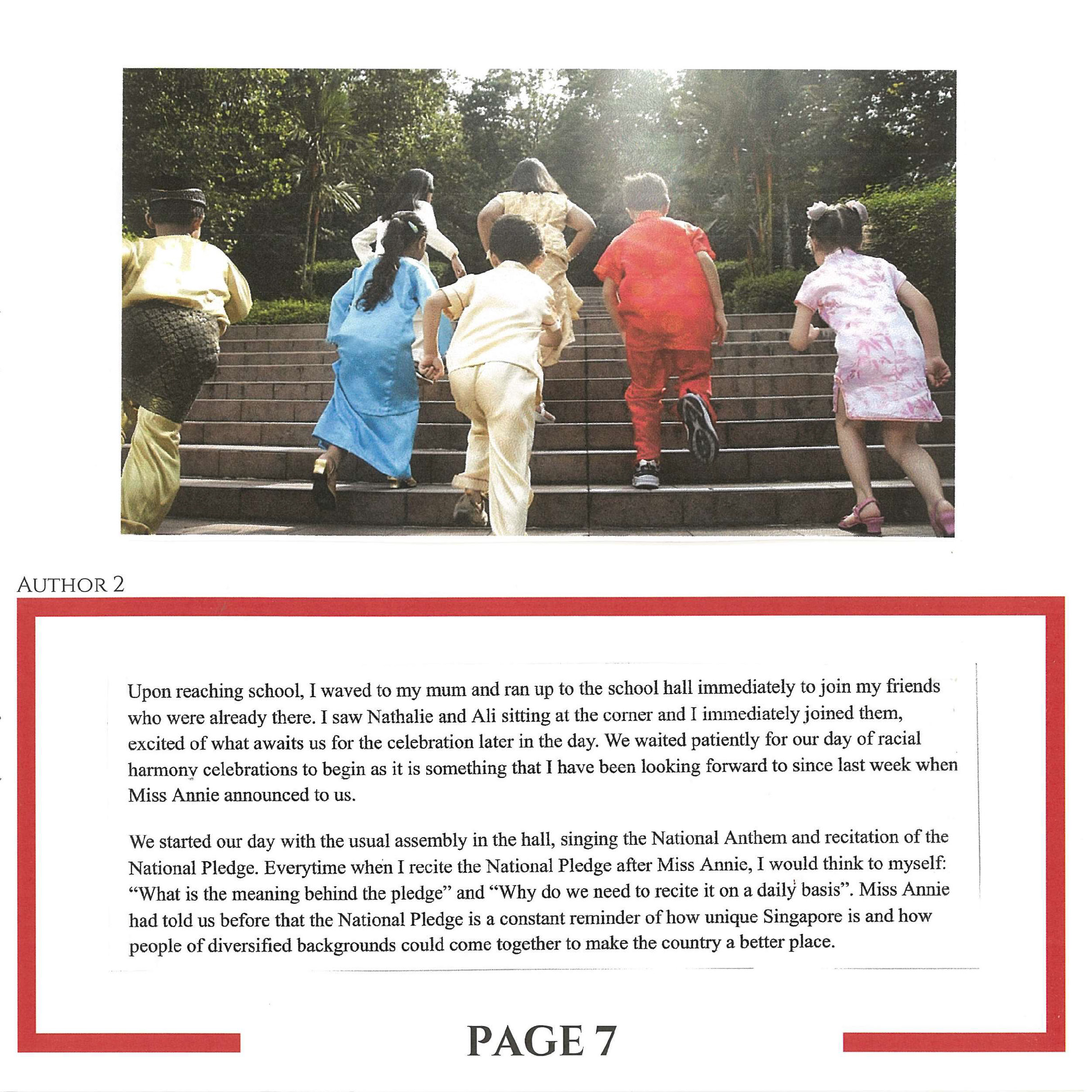
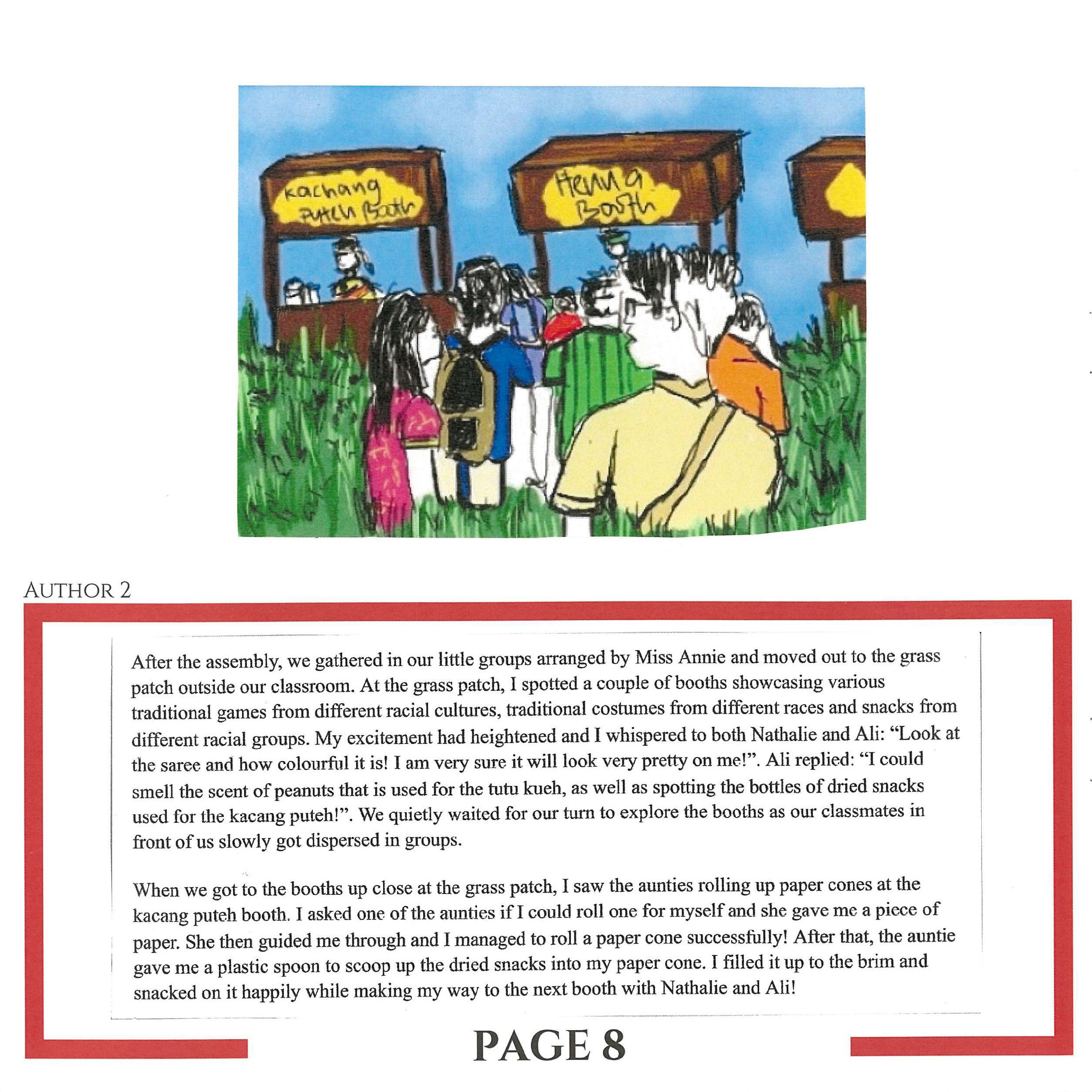
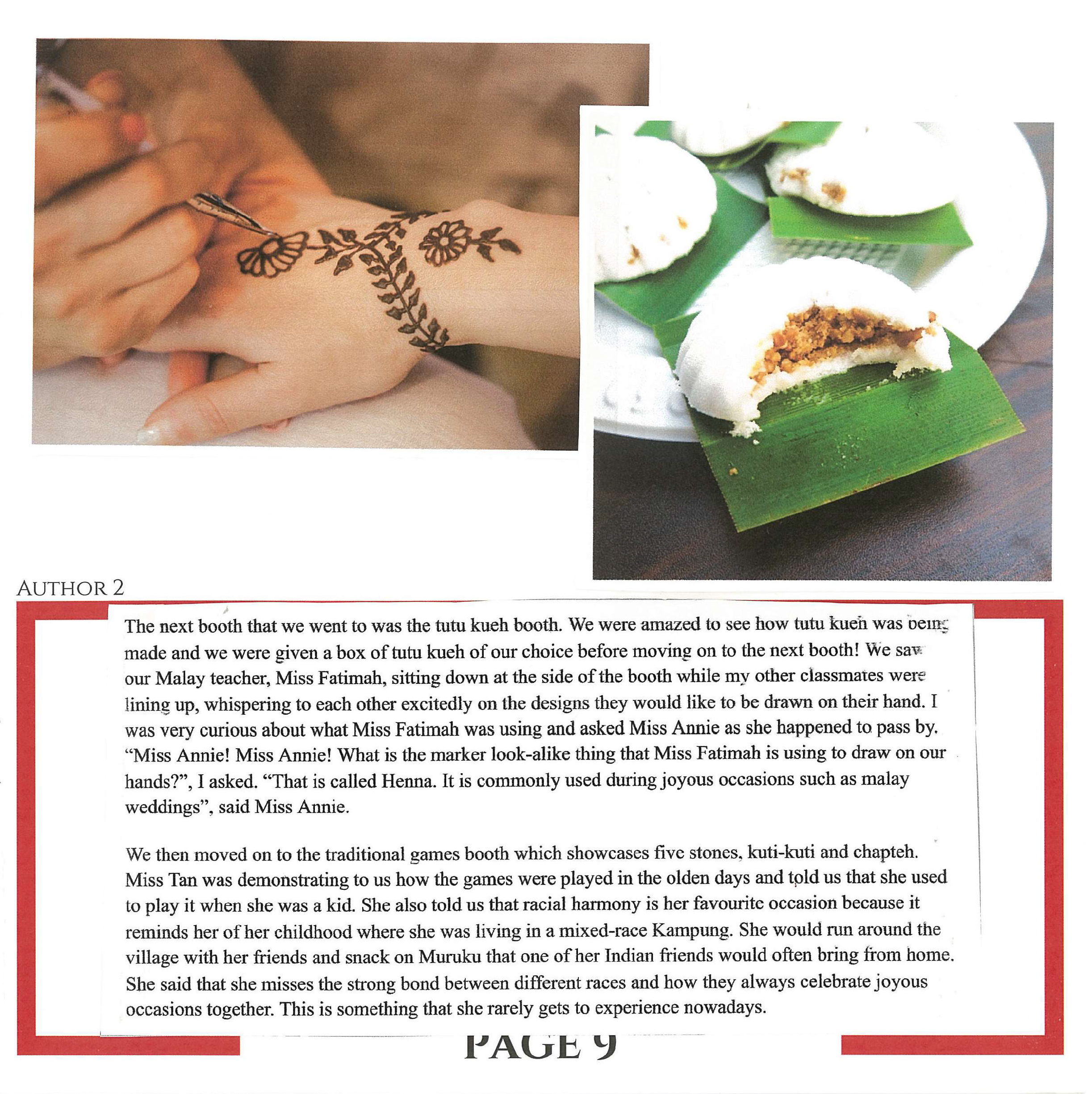
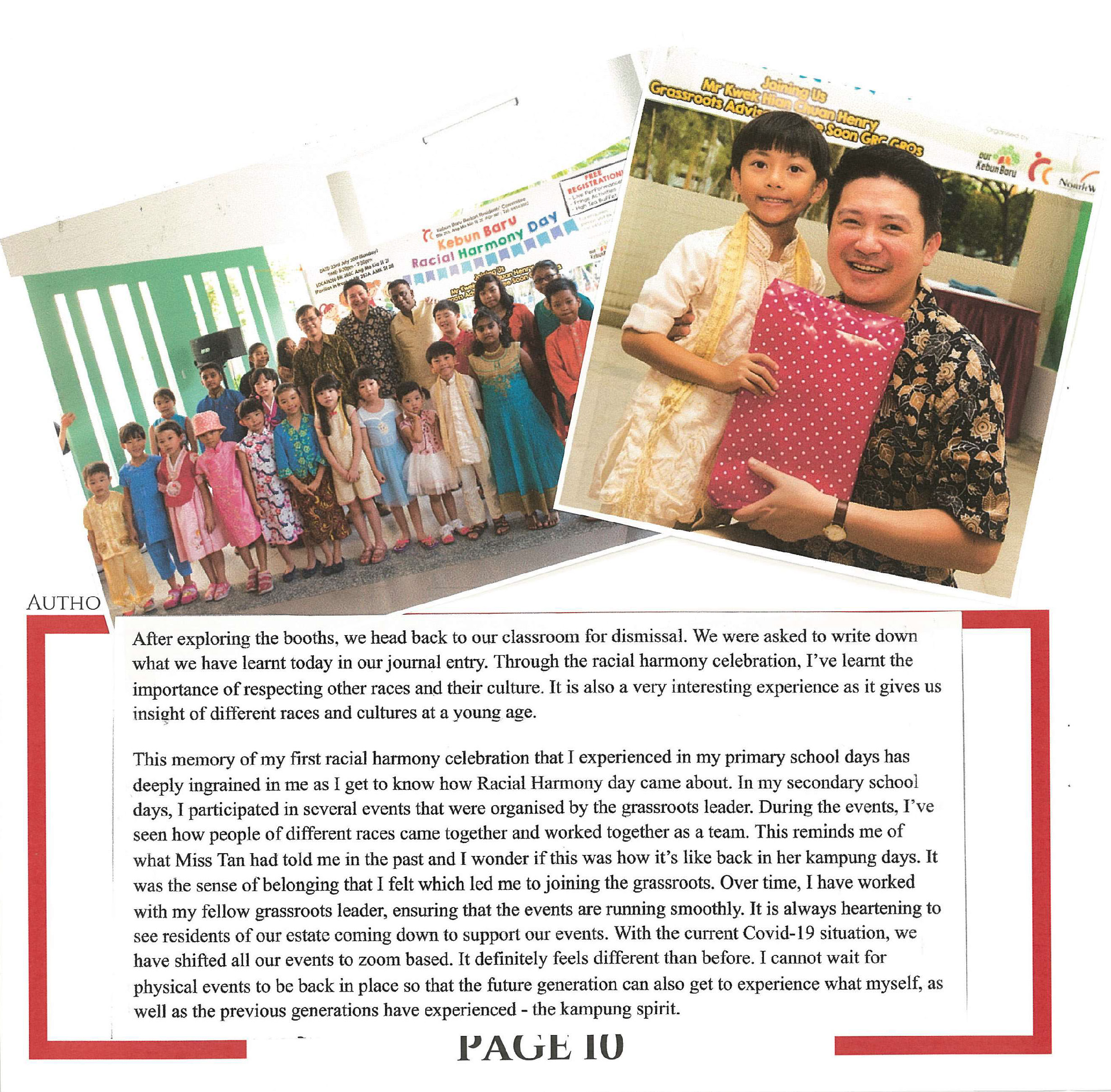
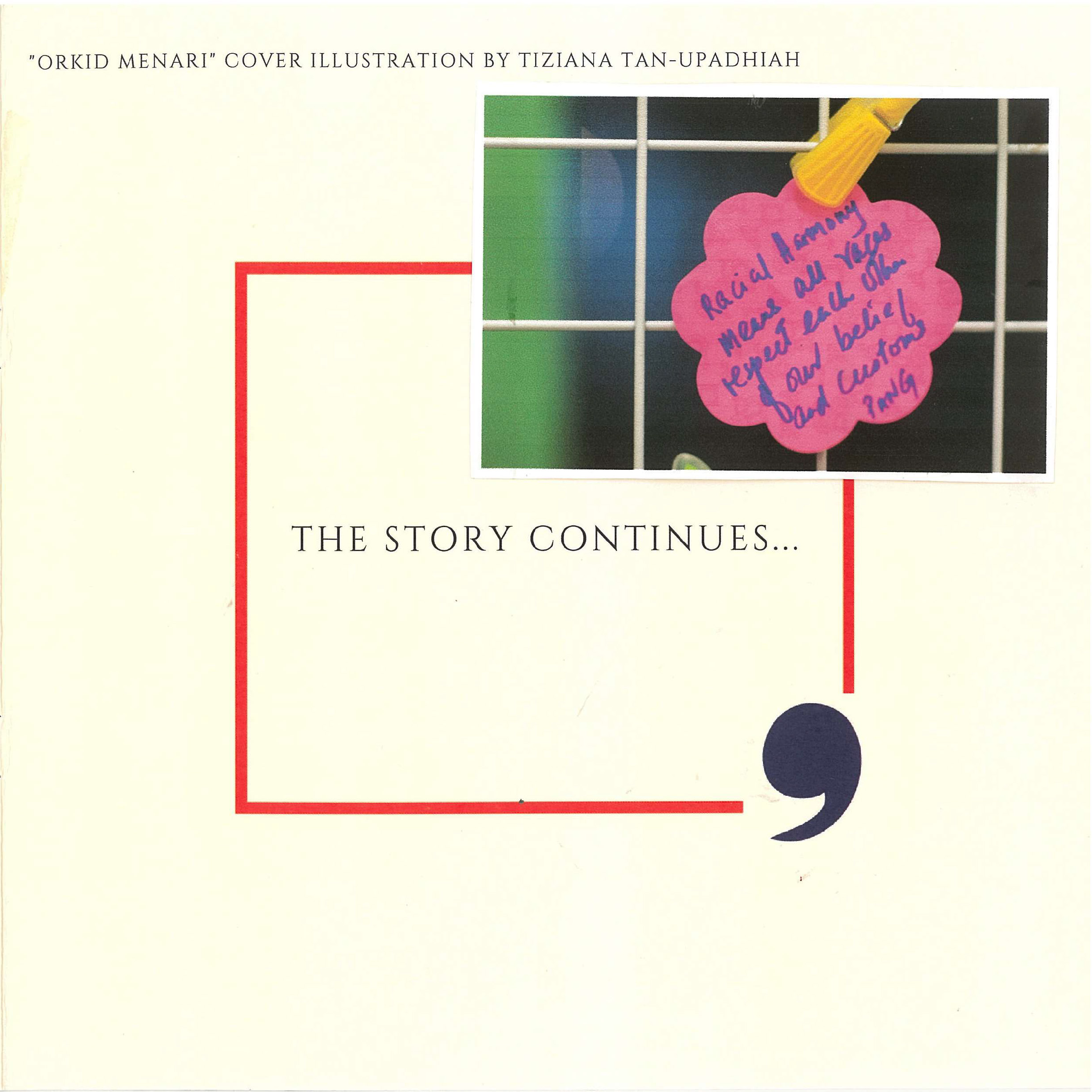
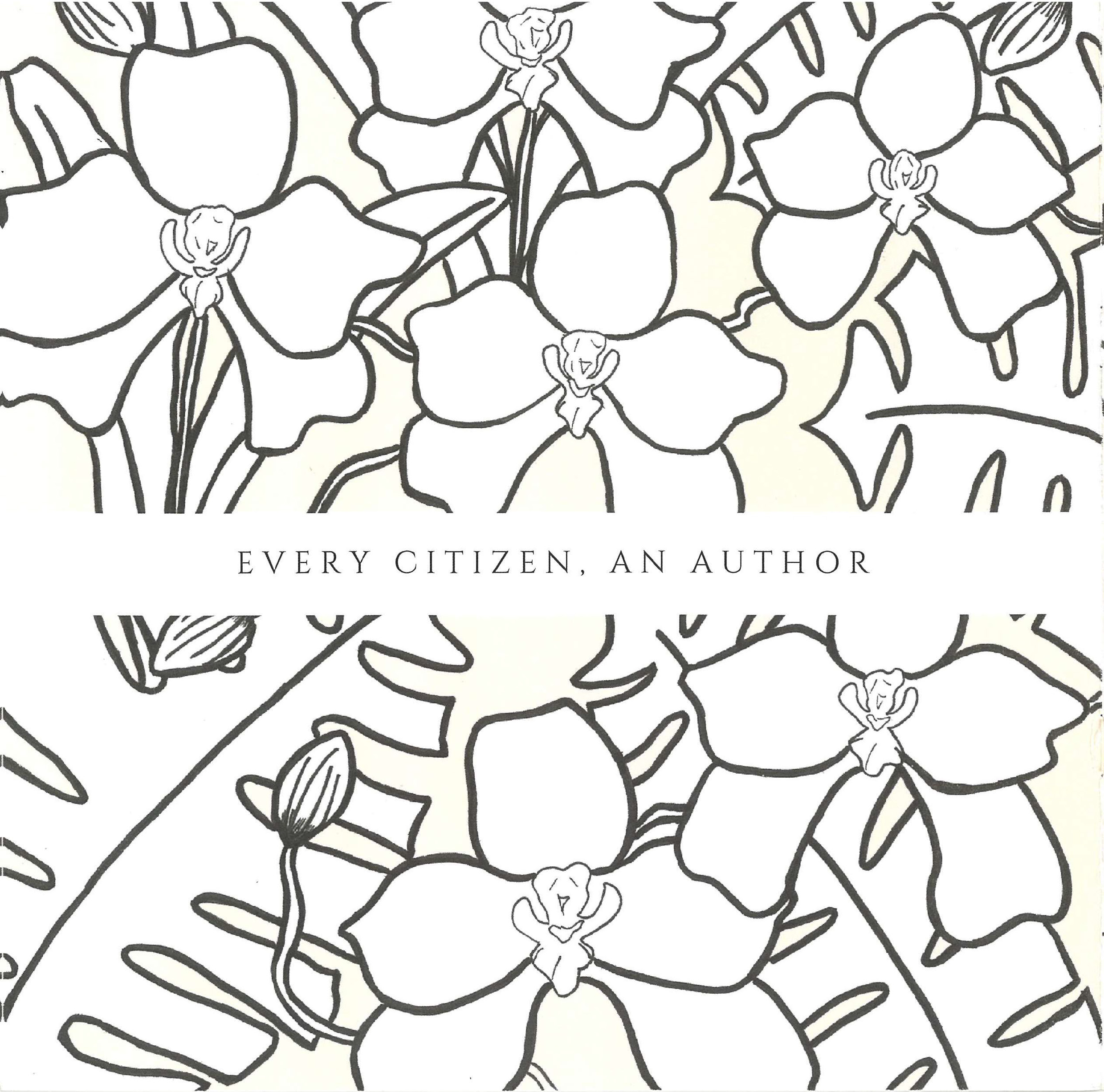
21st July...
Harbans Singh:
My class was in its usual noisy banter when the class monitor shouted that the Form Teacher was coming. She was, but with a certain unusual haste in her walk. She rushed into the classroom when she reached and said immediately that she had an important announcement to make. There had been some incidents in Singapore that morning and all classes were cancelled, and we had to go home immediately and not return until we were informed that school had been reopened. She repeated, albeit a little more tersely - Go straight home. She had a worried, tensed look and her message was punctuated with a tone of seriousness, leaving little doubt to the gravity of her message. We quickly packed our bags and immediately left the classroom, as did all the other children in the school. As I walked down the stairs leading out of the school, the other school students and even staff were all rushing to go back. What had happened?
As I walked out of the gates, I met an old Chinese lady, a stranger. She saw me walking alone looking worried and asked "Uu nang lai chua lu tng, boh?" (Chinese - Is someone coming to fetch you?) "Boh, leh. Wah si khya ching hng" was my quick reply (Chinese - No. I am staying far away). "Tik tik trig chu hor", she said (Chinese - You better go straight home). I looked at her face and she was talking in all seriousness, somewhat pushing me with urgency.
Surely there must be something amiss, I thought. Why are strangers advising me to go straight home? I scanned around and noticed that the road was deserted, save for a few people hurriedly moving along, some running. The shops were shuttered. As I continued to walk along the road, I noticed a group of people gathering outside a Church some distance away. Huh? Was this the danger I was being warned of? What should I do? Though frightened, I decided to walk on. The members of the crowd were talking excitedly amongst themselves in anxious tones. I overheard them saying there were fights between the Malays and Chinese and that the situation was serious and spreading. Passing them, my anxiety was visibly increasing. Fights between races? And spreading? What was happening?
I was still far from my home when I reached the bus stop. A South Indian uncle approached me and asked what I was doing there alone. He informed me that there were some bad incidents that happened in Geylang and most of the bus services plying towards that direction had been cancelled. He asked for my address and advised me to take a bus to the nearest point and then walk home. "You can take this bus", pointing to a bus that had just arrived. In my rush to take the bus, I forgot to thank him. I guess I was consumed by too much fear by then.
The Chinese bus conductor approached me and said, "Young boy, you had better go home straight. It's too dangerous to be outside. Anything can happen". I looked at him, not knowing what to say as by now, I, too, already had the frightening information. I gave him the money for the ticket, but he refused to accept it saying something about the bus route being diverted. He showed me which bus stop to alight nearer to my home. I thanked him and as I alighted, also thanked the Malay bus driver, who nodded in response, saying "Terus balek rumah, yah" (Malay — Go straight Home).
As I walked along the road towards my home, there were Police cars moving around with their sirens on. A policeman noticed me and shouted, "Young boy, what are you doing outside?" "I'm from school, going back home," I stammered. "Then go home quickly," he shouted sternly, "you are not supposed to be on the streets." Yes Sir, I responded and broke into a run.
I was then staying in a mixed races Kampung, counting Malay, Chinese, and Indians among its populace. We were all good neighbors and I wondered if there would be a change of attitudes because of this situation. What if they were affected? What if there are fights between neighbors? What if?
As I walked home, I met some of my friends outside the village. Nasir told me that the villagers had got together and decided that small groups of them would station themselves at strategic points to look out for trouble causers from outside, should they come. We don't want what was happening outside to filter into our village and affect the relationship amongst us, he explained. "But", Ah Hong interrupted, "you better go home straight. Your father was injured". What?
I rushed home and there was my father lying on the bed with his arm bandaged. I asked him what happened. He informed me that his Chinese Manager wanted to go home and requested for a few staff, including my father, to escort him in a car. He volunteered but along the way, they were waylaid by rioters, and the car was attacked with stones and other projectiles. Nails were also thrown on the road to puncture the tires. One of the stones smashed his elbow as he was sitting at the side of the back seat. Nonetheless, the car moved on and the manager was sent home safely. No worries, he assured me, I am ok.
But why was all this happening, I asked. "This has something to do with Singapore merging with Malaysia and some political differences arising from it," he responded, "Something akin to Malaysian Malaysia vs Malays Malaysia political slogans with some racial angle to it." Will this ever end, I asked. "Leave that to Mr. Lee Kuan Yew. He will lead us out of it. I have the confidence."
This episode had left an indelible mark on me. It was for this reason that I decided to join the grassroots to help promote social cohesion. Over time, I had organized many events and was always conscious of including various racial groups in the process. One such example was the first joint lantern festival in Ang Mo Kio, which was led by me. I felt immense happiness in seeing a successful Chinese festival attended by all races, with their children participating by carrying lanterns to celebrate the occasion. It was beautiful and since, I have continued to organize many more activities with the same objective. May this current peaceful situation amongst races in Singapore last for a long time to come.
Quek Li Ying:
Looking at the mirror, twirling around with my newly bought pink Qi Pao (Chinese — Cheongsam) that I chose together with my mum last week. I cannot wait to attend my first racial harmony celebration in primary school! Miss Annie asked all of us to wear our traditional costumes to celebrate racial harmony in school and I wonder how my friends would look in their traditional costumes, hmm... "Come here, sit down, and do not move", my mum said. I happily hopped over to her and sat still on the chair as my mum pleats my hair for me. "What do you think Nathalie will be wearing? Do you think she will be wearing a qi pao too? How about Ali? He is Malay so what will he be wearing?", I asked. "He would be wearing a Baju Melayu," my mum said. "What does a Baju Melayu look like?", I asked while trying to imagine what Ali would look like in it. My mum smiled while looking at how excited I am to go to school today.
Upon reaching school, I waved to my mum and ran up to the school hall immediately to join my friends who were already there. I saw Nathalie and Ali sitting at the corner and I immediately joined them, excited of what awaits us for the celebration later in the day. We waited patiently for our day of racial harmony celebrations to begin as it is something that I have been looking forward to since last week when Miss Annie announced to us.
We started our day with the usual assembly in the hall, singing the National Anthem and recitation of the National Pledge. Every time when I recite the National Pledge after Miss Annie, I would think to myself: "What is the meaning behind the pledge" and "Why do we need to recite it on a daily basis". Miss Annie had told us before that the National Pledge is a constant reminder of how unique Singapore is and how people of diversified backgrounds could come together to make the country a better place.
After the assembly, we gathered in our little groups arranged by Miss Annie and moved out to the grass patch outside our classroom. At the grass patch, I spotted a couple of booths showcasing various traditional games from different racial cultures, traditional costumes from different races, and snacks from different racial groups. My excitement had heightened and I whispered to both Nathalie and Ali: "Look at the saree and how colourful it is! I am very sure it will look very pretty on me!". Ali replied: "I could smell the scent of peanuts that is used for the tutu kueh, as well as spotting the bottles of dried snacks used for the kacang puteh!". We quietly waited for our turn to explore the booths as our classmates in front of us slowly got dispersed in groups.
When we got to the booths up close at the grass patch, I saw the aunties rolling up paper cones at the kacang puteh booth. I asked one of the aunties if I could roll one for myself and she gave me a piece of paper. She then guided me through and I managed to roll a paper cone successfully! After that, the auntie gave me a plastic spoon to scoop up the dried snacks into my paper cone. I filled it up to the brim and snacked on it happily while making my way to the next booth with Nathalie and Ali!
The next booth that we went to was the tutu kueh booth. We were amazed to see how tutu kueh was being made and we were given a box of tutu kueh of our choice before moving on to the next booth! We saw our Malay teacher, Miss Fatimah, sitting down at the side of the booth while my other classmates were lining up, whispering to each other excitedly on the designs they would like to be drawn on their hand. I was very curious about what Miss Fatimah was using and asked Miss Annie as she happened to pass by. "Miss Annie! Miss Annie! What is the marker look-alike thing that Miss Fatimah is using to draw on our hands?", I asked. "That is called Henna. It is commonly used during joyous occasions such as Malay weddings", said Miss Annie.
We then moved on to the traditional games booth which showcases five stones, kuti-kuti and chapteh. Miss Tan was demonstrating to us how the games were played in the olden days and told us that she used to play it when she was a kid. She also told us that racial harmony is her favourite occasion because it reminds her of her childhood where she was living in a mixed-race Kampung. She would run around the village with her friends and snack on Muruku that one of her Indian friends would often bring from home. She said that she misses the strong bond between different races and how they always celebrate joyous occasions together. This is something that she rarely gets to experience nowadays.
After exploring the booths, we head back to our classroom for dismissal. We were asked to write down what we have learnt today in our journal entry. Through the racial harmony celebration, I've learnt the importance of respecting other races and their culture. It is also a very interesting experience as it gives us insight into different races and cultures at a young age.
This memory of my first racial harmony celebration that I experienced in my primary school days has deeply ingrained in me as I get to know how Racial Harmony day came about. In my secondary school days, I participated in several events that were organised by the grassroots leader. During the events. I've seen how people of different races came together and worked together as a team. This reminds me of what Miss Tan had told me in the past and I wonder if this was how it's like back in her kampung days. It was the sense of belonging that I felt which led me to joining the grassroots. Over time, I have worked with my fellow grassroots leader, ensuring that the events are running smoothly. It is always heartening to see residents of our estate coming down to support our events. With the current Covid-19 situation, we have shifted all our events to zoom based. It definitely feels different than before. I cannot wait for physical events to be back in place so that the future generation can also get to experience what myself, as well as the previous generations have experienced - the kampung spirit.
